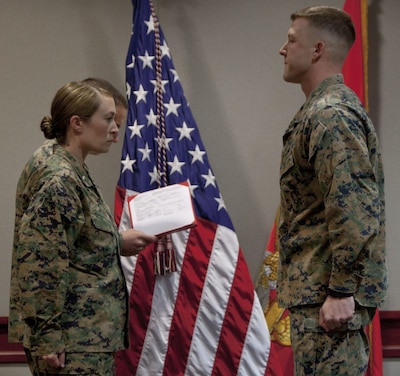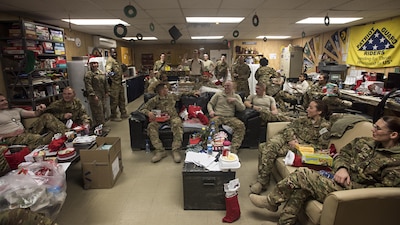By Jim Garamone DoD News, Defense Media Activity
WASHINGTON, Dec. 20, 2017 — NATO is evolving and adapting to
changing times, and part of that evolution must involve the European Union, the
alliance secretary general said at the French Ecole Militaire yesterday.
Jens Stoltenberg told students at the illustrious university
in Paris that NATO has proven its ability to evolve to face changing threats.
“Our history has taught us that our ability to adapt is
crucial to our success,” the secretary general said. “Again and again, faced
with a changing world, the alliance has evolved.”
The alliance formed to combat the Soviet Union and ensure
Western Europe’s freedom and independence. It evolved when the Berlin Wall fell
in 1989 and the Soviet Union dissolved in 1991.
It evolved again with the al-Qaida attacks on 9/11, with
NATO taking a lead role in Afghanistan.
Three years ago, the alliance had to change again when
Russia illegally annexed Crimea -- the only time since World War II that a
European country has seized part of another by force. And in the Middle East,
the Islamic State of Iraq and Syria captured Mosul and Raqqa, and declared
those cities as parts of its so-called caliphate.
“As a result, NATO has to both strengthen our collective
defense at home and manage crises beyond our borders,” Stoltenberg said.
Deter, Defend
In Europe, NATO allies “have implemented the largest
reinforcement of our deterrence and defense since the Cold War,” he said. The
NATO Response Force tripled to 40,000 troops, including a high-readiness force,
ready to move within days. The alliance also stepped up military exercises and
enhanced air policing in the Baltic and Black Sea regions.
“We have deployed almost 5,000 troops in four multinational
battle groups to the east of the alliance,” he said. Those battle groups are in
Latvia, Estonia, Lithuania and Poland.
And the allies are continuing to increase defense spending,
he said.
“NATO’s actions are defensive, proportionate and in line
with our international commitments,” the secretary general said. “Our aim is
not to provoke conflict, but to prevent conflict. We don’t want a new Cold War,
and we don’t want a new arms race.”
Russia is a neighbor and the alliance approach to Russia
combines strong defense with meaningful dialogue.
But Russia is only one problem that must be dealt with.
“Since 9/11, NATO allies have stood together in solidarity against terrorism,”
Stoltenberg said. “In Afghanistan we have transitioned from combat operations,
to the training and advising of local Afghan forces. But we are now increasing
the number of troops serving in our mission to 16,000 NATO soldiers in the
Resolute Support Mission in Afghanistan.”
The alliance is also a full partner of the global coalition
to defeat ISIS. NATO assets -- such as the AWACS capability -- and NATO
expertise are on display throughout Iraq, the rest of the Middle East and North
Africa.
NATO Stronger With EU
“NATO is strengthening its collective defense and, at the
same time, projecting stability in its neighborhood,” Stoltenberg said. “Both
of those are more effective when NATO and the European Union work together.”
Stoltenberg had one big statistic to back up his claim:
About 94 percent of the EU’s population lives in a NATO member nation.
Talks continue and the two alliances have made progress. “We
have boosted our cooperation on cyber defense, maritime security, fighting
terrorism and countering hybrid warfare, among many other things,” the
secretary general said. “Neither NATO nor the European Union have all the tools
to tackle the challenges alone, but together we are a formidable force for
good.”
He called on France, a founding member of both NATO and the
EU, to play a key role to ensure the coherence of these efforts. “I am
convinced a strong European defense is good for the European Union, it is good
for Europe and it is good for NATO, as long as it respects three key
principles,” he said.
Build, Strengthen, Compliment
The first is to build the necessary capabilities: spending
more and spending better. That means tackling the fragmentation of the European
defense industry. “The U.S. has one type of main battle tank, while Europe has
17 different types,” he said. “The U.S. has four types of frigates and
destroyers; Europe has 29. The U.S. has six types of fighter planes; Europe has
20.”
He does not want to eliminate competition, but he does want to
see some coherence, interoperability and cost savings in the process.
“Second, a stronger European defense also needs to involve
non-EU allies to the fullest possible extent, of course respecting the autonomy
and integrity of the European Union,” he said.
Stoltenberg said nations on both sides of the Atlantic
continue to be engaged in European security. “For the first time in years, the
United States and Canada are increasing their military presence on our
continent,” he said. “And, after Brexit, non-EU allies will account for 80
percent of NATO defense spending, and three of the four battle groups in the
eastern part of the alliance will be led by non-EU allies.”
There is no way the EU can replace NATO, he said, but it
could strengthen the European pillar of the alliance.
Finally, a stronger European defense needs to compliment,
not duplicate, NATO’s own efforts.
“On duplications, for instance, NATO already has a
well-established defense planning process,” Stoltenberg said. “We’ve had it for
decades, and as part of that process, we identify in detail the capabilities
that each ally needs to deliver to ensure the alliance has the tools it needs
to do its job. It would be a mistake for the EU to duplicate that process.
Capitals should not be faced with two conflicting lists for capability
requirements.”
“We share 22 members, so to compete would be like competing
with ourselves,” he continued. “That makes no sense. Our roles are distinct but
mutually reinforcing. We must work together in a coherent way.”








